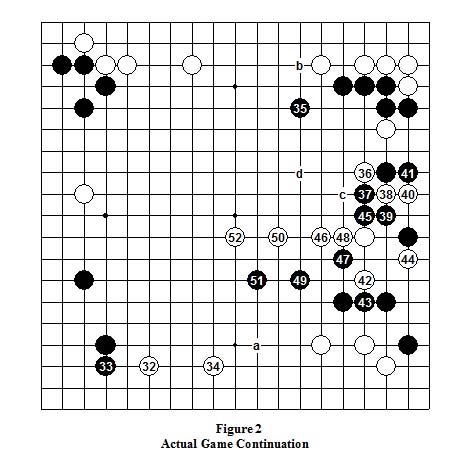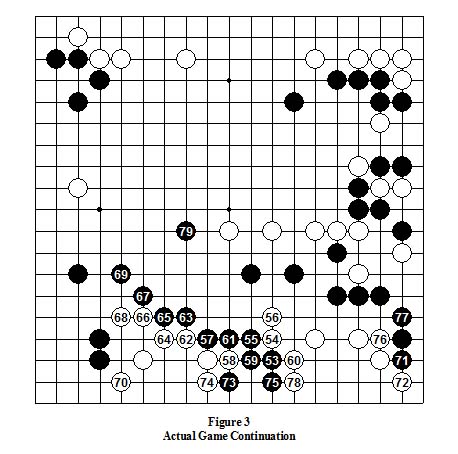
Black:
Strengths:
- The upper side is very strong, but the “b” stones don’t reach out very far into the vital center, so their overall impact is only modest.
- The “k” stones already have one eye and potential for another both on the edge and in the center, so they may be considered modestly strong.
Weaknesses:
- The “i” stones have no eyes and are pressed on both sides by Whites which are stronger.
Opportunities:
- The (modest) chance to exploit the weakness of the White “h” stones.
- The (even more modest) possibility of rescuing the trapped “e” stone.
- The chance to attack and possibly capture the White “f” stone.
- The potential for attacking the White “j” stones which still have only 1 eye.
Threats:
- The still unsettled status of the fairly large “k” group.
- The weakness of the “i” group, sandwiched between the stronger White “h” and “j” groups.
Settled Territory:
- 10+ points in the upper left corner.


